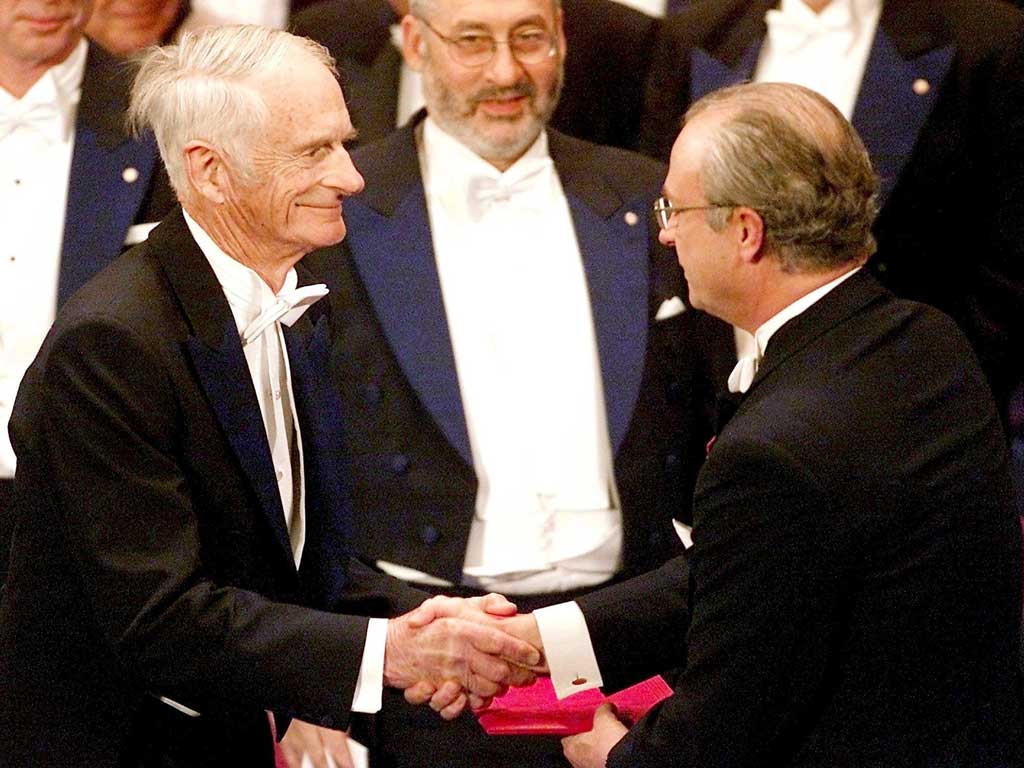William Knowles: Chemist who won the Nobel Prize at 84

William Knowles, whose work is said to have “changed the face of modern medicine”, shared the 2001 Nobel Prize for Chemistry for developing the first chiral catalysts, which led to safer methods of manufacturing a number of medicines including antibiotics and heart drugs, and L-dopa, which is used for the treatment of Parkinson's disease.
Knowles, an organic chemist, shared the prize with Ryoji Noyori of Nagoya University, Japan, who redesigned the catalyst to expand its use, and K Barry Sharpless of the Scripps Research Institute in San Diego, who refined it to make it apply to almost all molecules.
Upon hearing he had won the Nobel Prize at the age of 84, Knowles recalled, “I never even thought such a thing was in the offing... I've been retired and out of the running for some time. It overwhelmed me.” He gave some of the prize money of more than $200,000 to colleagues who had collaborated on the research and donated the rest to Harvard and Columbia universities.
Born in Taunton, Massachusetts in June 1917, William Standish Knowles was the son of a textile mill owner while his mother tended home; he recalled that she would have gone to medical school in “a more enlightened era”. After boarding school, where Knowles excelled at mathematics and science, he studied chemistry at Harvard University and completed his doctorate in steroid chemistry at Columbia in 1942. He later said, “At Harvard competition was fierce and I always got a solid B, but not the straight As of many of my classmates. These were the days when most got a gentleman's C.”
With the US having only recently entered the Second World War, and given the shortage of chemists, Knowles, who believed the “industry would hire any chemist that could breathe,” was fast-tracked to the chemical giant Monsanto in Dayton, Ohio, where he worked on military projects, including the manufacture of chemicals for explosives and mite repellent for soldiers' clothing. He then transferred to company headquarters in St Louis, in 1944, where he worked until his retirement in 1986.
Knowles' work concerned a long-standing problem in organic chemistry. Just as the left hand is a mirror image of the right, many molecules come in two forms, called chiral forms, identical in chemical composition but mirror images of each other. The two forms can have very different properties and markedly different effects upon the body - one beneficial, the other toxic. For example, one version of the molecule limonene smells of oranges, but its mirror image has a lemony, turpentine-like odour.
Another example was thalidomide, a drug developed in the 1950s by a German pharmaceutical company, to ease nausea in pregnant women. One “hand” of the molecule did just that, but it (or its mirror image), also caused deformities in tens of thousands of infants across the world, as testing had not been rigorous enough. It was withdrawn by 1962.
The drug L-dopa was another chiral example. In its left-handed, “L” form, it reduces Parkinson's symptoms such as tremors and rigidity. In its “D” (D-dopa) form, however, it is toxic. During the 1960s the standard process to make L-dopa yielded equal amounts of the two forms. But separating them after they were made was time-consuming and expensive.
Between 1968 and 1972, Knowles and his team developed a way of improving the manufacturing process by using a new catalyst to produce more of the most desirable form of certain molecules, including L-dopa. He developed a process called asymmetric hydrogenation, which uses a catalyst not just to speed up the reaction but also to skew it to produce 97.5 per cent L-dopa and only 2.5 per cent of the unwanted D-dopa. Monsanto then began large-scale production of the drug, which is still in use, particularly in the treatment of early-stage Parkinson's.
With many pharmaceutical drugs being chiral, Knowles' breakthrough ushered in a new era of pharmaceutical development. K Barry Sharpless expanded the process to produce beta-blockers used in treating heart conditions, anti-inflammatory medicines and many other drugs.
Upon retirement, Knowles continued to lecture and did consultancy work, while spending more time on his outdoor pursuits of cycling, fly-fishing and hiking. He received a number of honours and awards, and he also became an active conservationist.
William Knowles, chemist: born Taunton, Massachusetts 1 June 1917; married 1945 Nancy (three daughters, one son); died Chesterfield, Missouri 13 June 2012.
Join our commenting forum
Join thought-provoking conversations, follow other Independent readers and see their replies
Comments